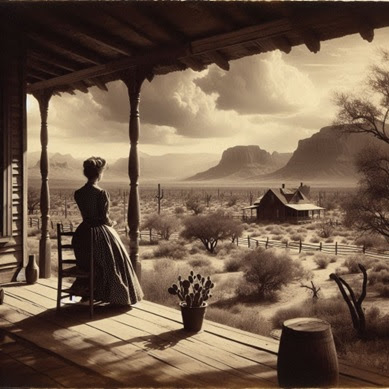The couple’s second child, Edith Winifred Icke, was born in July 1890 in Wellington, Shropshire, England. The 1891 census of England and Wales also recorded the Ickes in Wellington, where Mr. Icke was working as a commissions agent.
By about 1893, the Ickes were in Minneapolis, Minnesota, when Mr. Icke was hired by Josiah T. Harbert to manage his ostrich farm in south Phoenix. Perhaps the desert climate reminded the Ickes of South Africa, for they came to Arizona at once…and stayed. The United States federal census of 1900 records them living about three miles northwest of Phoenix.
Around this time, newspaper accounts suggest that Robin Icke was of unsound mind. He was committed to the insane asylum for a brief period in September of 1900. In April 1901, Fannie Icke contracted typhoid fever. She died on April 13th. Because Mrs. Icke’s doctor had been sanguine about her chances of recovery, and because of her husband’s previous mental illness, an autopsy was ordered. It proved, however, that Mrs. Icke had indeed died of typhoid fever.
Fannie Icke was buried in Porter Cemetery, Block 17. Shortly thereafter, the two Icke children--John, 13, and Edith, 10—were sent back to England to be raised by Fannie’s married sister.
While the exact nature of Robert Icke’s mental illness is not known, the death of his wife and the loss of his children may well have pushed him over the edge. On March 2, 1905, he died of alcoholism in his room at the Commercial Hotel in Phoenix. He was buried next to his deceased wife in Porter Cemetery, B17.
- by Donna Carr











